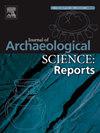从稳定碳和氮同位素分析看公元前 10 世纪匈牙利遗址中社会地位和生理性别对饮食的影响
IF 1.5
2区 历史学
0 ARCHAEOLOGY
引用次数: 0
摘要
稳定同位素分析是确定过去社会饮食以及饮食与生理性别和社会阶层关系的重要工具。在这项研究中,我们对来自公元 10 世纪匈牙利四个遗址(Karos-Eperjesszög、Tiszanána、Bodroghalom 和 Üllő-Ilona út)的个体进行了稳定碳和氮同位素分析,以确定他们的饮食是否受其性别或社会地位的影响。我们还将这些遗址与我们之前公布的同时代遗址 Kenézlő-Fazekaszug 进行了比较。研究得出了一些意想不到的结果,表明社会地位的提高并不是上层卡罗斯遗址居民摄入大量动物蛋白的可靠指标。此外,研究结果还表明,在蒂萨纳等推定的中产阶级遗址中,生理性别只是影响动物蛋白消耗量的一个因素。这项研究通过全面取样,为中东欧数据库提供了新的稳定同位素数据,并为匈牙利历史上的一个关键时期提供了令人兴奋的结果。它还可能成为未来对其他 10 世纪匈牙利遗址进行稳定同位素分析的动力。本文章由计算机程序翻译,如有差异,请以英文原文为准。
The impact of social status and biological sex on diet at 10th century CE Hungarian sites from stable carbon and nitrogen isotope analyses
Stable isotope analysis is a valuable tool to determine the diet of past societies, as well as the relationship that diet has with biological sex and social class. In this research, we performed stable carbon and nitrogen isotope analyses on individuals from four 10th century CE Hungarian sites (Karos-Eperjesszög, Tiszanána, Bodroghalom, and Üllő-Ilona út) to determine if their diet was affected by their sex or social status. We also compared these sites with Kenézlő-Fazekaszug, our previously published, contemporaneous site. The study yielded some unexpected results, indicating that elevated social status was not a reliable indicator of high animal protein consumption among the residents of the upper class Karos site. Additionally, the results suggested that biological sex was only a factor in animal protein consumption at the putative middle-class sites, such as Tiszanána. With its comprehensive sampling, this research provides new stable isotopic data to the Central and Eastern European database, as well as exciting results about a crucial period in Hungarian history. It may also serve as the impetus for future stable isotope analyses of other 10th century Hungarian sites.
求助全文
通过发布文献求助,成功后即可免费获取论文全文。
去求助
来源期刊

Journal of Archaeological Science-Reports
ARCHAEOLOGY-
CiteScore
3.10
自引率
12.50%
发文量
405
期刊介绍:
Journal of Archaeological Science: Reports is aimed at archaeologists and scientists engaged with the application of scientific techniques and methodologies to all areas of archaeology. The journal focuses on the results of the application of scientific methods to archaeological problems and debates. It will provide a forum for reviews and scientific debate of issues in scientific archaeology and their impact in the wider subject. Journal of Archaeological Science: Reports will publish papers of excellent archaeological science, with regional or wider interest. This will include case studies, reviews and short papers where an established scientific technique sheds light on archaeological questions and debates.
 求助内容:
求助内容: 应助结果提醒方式:
应助结果提醒方式:


